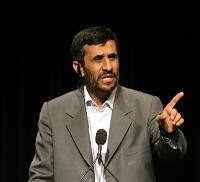The Pentagon’s annual assessment of Iran’s military power (.pdf), which was released last week, is notable for the amount of attention it devotes to Iran’s missile capabilities. While mentioning Iran’s other military assets in passing, the report describes Tehran’s missile capabilities in extensive detail, noting the improvements Iran has made to existing missiles, its efforts to develop more-sophisticated systems and the growing competency of Iranian forces in operating these systems due to more-frequent live-fire drills.
Iran itself has also been placing greater emphasis on its missile capabilities recently, particularly in responding to the European Union’s implementation of oil sanctions earlier this month. Since then, Iranian officials have boasted that their missiles can reach Israel and 35 U.S. military bases instantly; announced that they have equipped their speedboats with short-range missiles; and held three days of “missile war games” that received extensive press coverage inside Iran.
However, the focus by both the Pentagon and Tehran on the growing sophistication of Iran’s missiles obscures a more significant development. Specifically, over the past year, Iran’s security has become increasingly dependent on its missile arsenal as its other deterrent capabilities have deteriorated. This creates both opportunities and risks for the U.S. and its allies.

